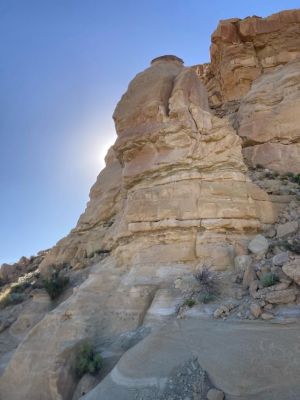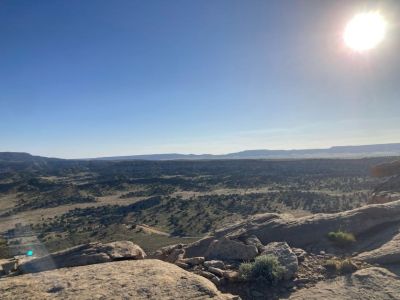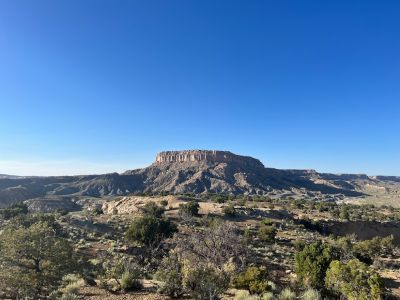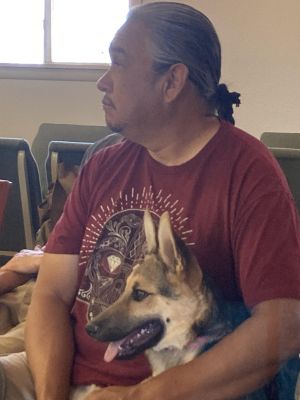Jonathan Orjala shares about the early morning hike that came at the end of a five-day “camp meeting” at our host church on the Navajo Nation:
The Sunday we left Black Mountain Mennonite Church, about ten of us woke up at 6 am and piled into two pickup trucks with the intention of climbing the mesa behind Navajo Pastor Daniel Smiley’s house. I rode in the truck with Daniel and after about a 15-minute drive down an extremely bumpy dirt road, we arrived at his childhood home. After dismounting the trucks we began our ascent up the mesa, right as the sun began to peak over the bluff to the east.
After a short but intense climb, we reached a stretch of cliff that had the names of everyone who had visited Daniel carved into the sandstone. Daniel had told us to carve our names into the cliff as well, so after about 10-minute break in order to carve our names, we climbed over the final crest and reached the top on the mesa.
We were amazed not only by the beauty of the view, but also by the profound silence. The only sound besides the soft crunching of our footsteps was the wind softly rustling the juniper bushes. After about half an hour, we began our descent back down the mesa and back to Daniel’s house.
My favorite part of this experience was our first couple of steps we took on the top of the mesa. The feeling of accomplishment, as well as the gorgeous view of the valley with its purple early morning haze, made the short but rather intense hike worth it. The view to the southeast was exceptionally grandiose, as the desert seemed to stretch out infinitely.
I do think that this hike certainly would not have been the same had we gone later in the day. Not only would it have been at least 20 degrees hotter, but we wouldn’t have gotten to experience the beauty of the sun peeking over the mesa and casting a brilliant collage of reds, oranges, and yellows into the sky. Additionally, I think that the sense of accomplishment that we felt would not have been nearly as great if we hadn’t started the hike half-asleep. I found that I fully woke up about halfway up the mesa, and honestly, I couldn’t ask for a better way to wake up.
In this experience, I found myself to be an observer of the beauty of the natural world, and an experiencer of the connection with the outdoors that we all felt while climbing that mesa. I found that I felt a sereneness that I usually only find myself experience at places such as the Grand Canyon or Yosemite.
One thing I am grappling with in this story is the fact that we carved our names into the rock. Although Daniel assured us that he asks everyone who visits to carve their names, and the multitude of names on the cliff confirmed that, I still felt a little uneasy. As a white outsider, I’m not entirely sure how I feel about coming onto a mesa that doesn’t belong to me and signing my name as if saying that I “conquered” it, especially considering the atrocities that my ancestors committed against the Navajo people.
I certainly didn’t feel like I “conquered” the mesa. I felt more like an observer to a place that has existed for thousands of years, similar to how our Navajo hiking guide Bryan described our previous hike in Buffalo Pass as trespassing on a great and ancient mountain that only tolerated our presence.
The signing of our names onto the cliff face signifies a conquest of nature which does not quite sit right with me. It seems like we were saying that we triumphed over the natural world by completing the hike, despite the fact that, at least to me, it felt more like the mesa allowed us to trespass on it and observe its beauty and grandeur for a short time.

Pastor Daniel Smiley being interviewed by Jonathan outside Black Mountain Mennonite Church nearly Chinle, Navajo Nation








